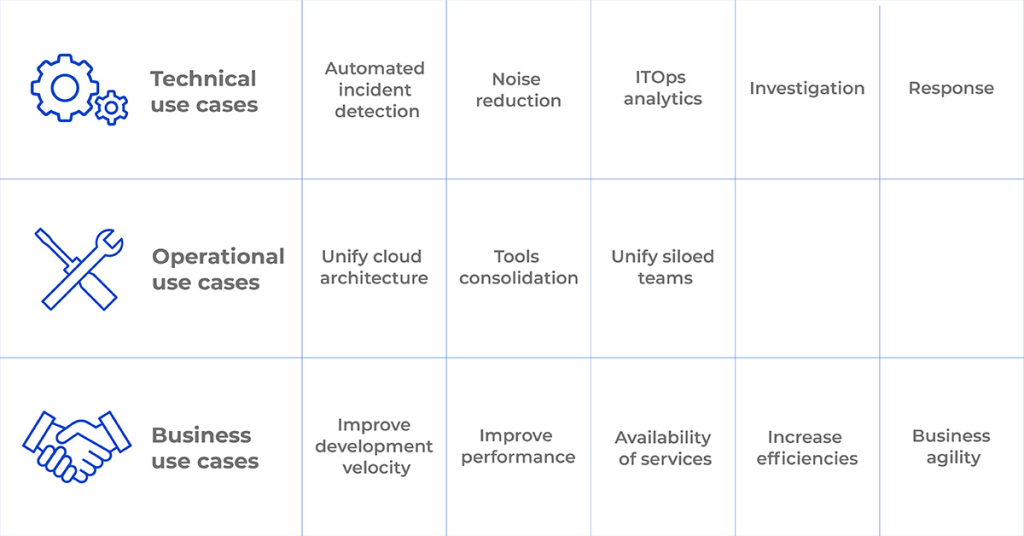
What the heck is AiOps?
Before diving into the most popular AiOps use cases, let’s make sure we’re all on the same page about what AiOps actually is. AiOps, short for Artificial Intelligence for IT Operations, is a fancy term for using AI and machine learning to improve IT operations.
In other words, AiOps is all about using data and algorithms to automate and optimize IT tasks, such as monitoring, troubleshooting, and incident response. This can lead to faster and more efficient operations, as well as better insights and decision-making.
Now that we’ve got that out of the way, let’s move on to the main event: the most popular AiOps use cases.
1. Monitoring and Alerting
One of the most common use cases for AiOps is monitoring and alerting. With so many systems and applications to keep track of, it can be overwhelming for IT teams to manually monitor everything. AiOps tools can help by automatically monitoring systems and sending alerts when something goes wrong.
For example, if a server goes down or a network connection is lost, an AiOps tool can detect the issue and send an alert to the IT team. This can help reduce downtime and improve system availability.
2. Incident Response
Another popular use case for AiOps is incident response. When an incident occurs, such as a security breach or system outage, it’s critical to respond quickly and effectively. AiOps tools can help by providing real-time insights into the incident and suggesting actions to take.
For example, an AiOps tool might detect a security breach and suggest isolating the affected system and blocking the attacker’s IP address. This can help minimize the impact of the incident and reduce the time it takes to resolve.
3. Predictive Maintenance
AiOps can also be used for predictive maintenance, which involves using data and analytics to predict when equipment or systems are likely to fail. By identifying potential issues before they occur, organizations can avoid downtime and reduce maintenance costs.
For example, an AiOps tool might analyze data from a fleet of trucks and predict which ones are likely to experience a breakdown in the near future. This can help the organization proactively schedule maintenance and avoid costly repairs.
4. Capacity Planning
Another use case for AiOps is capacity planning, which involves predicting how much capacity is needed for IT systems and applications. By accurately predicting capacity needs, organizations can avoid overprovisioning (which wastes resources) and underprovisioning (which can lead to performance issues).
For example, an AiOps tool might analyze data on website traffic and predict how much capacity will be needed during peak periods. This can help the organization ensure that enough resources are available to handle the traffic.
5. Root Cause Analysis

Finally, AiOps can be used for root cause analysis, which involves identifying the underlying cause of an IT issue. By identifying the root cause, organizations can take steps to prevent the issue from occurring again in the future.
For example, an AiOps tool might analyze data on server performance and determine that an application running on the server is causing performance issues. This can help the organization optimize the application or move it to a different server.
Wrapping Up
There you have it, folks: the most popular AiOps use cases. From monitoring and alerting to root cause analysis, AiOps can help IT teams automate and optimize a wide range of tasks. So if you’re not already using AiOps in your organization, it’s time to jump on the bandwagon!
